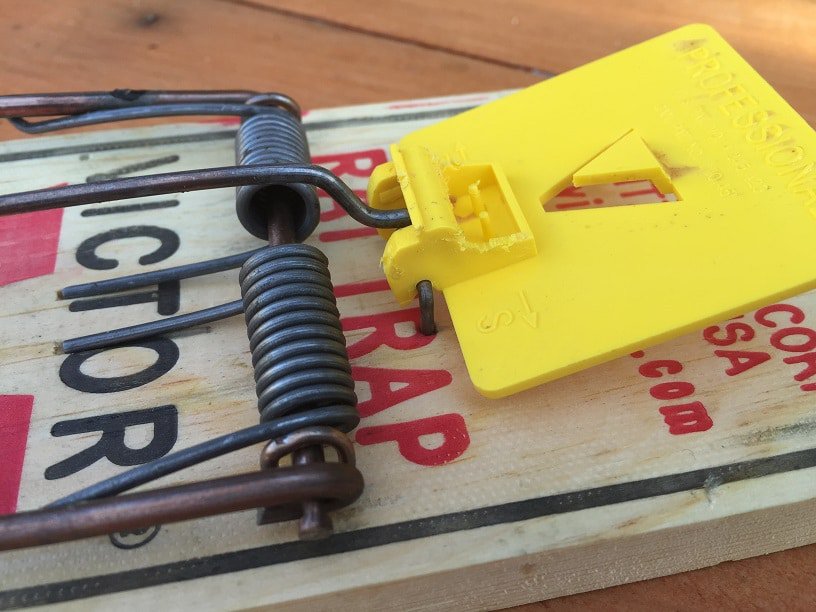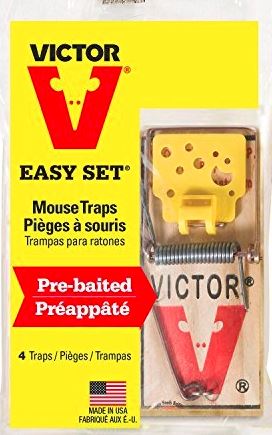Table of Contents
Dealing with a rat infestation is a difficult situation under any circumstances. Your primary objectives need to be protecting your property, family and pets. That being said, you don’t want to cause harm and suffering to the rats that are just trying to live their lives.
Since you are here I assume that you are looking for some information on humane traps to help solve your problem. Let me walk you through some options and talk about the pros and cons of each one.

The Most Humane Rat Trap
Ever since humans have been trying to thwart the spread of rat populations, there have been many innovations in trapping and eliminating them. Poisons, traps, and lures all have their own set of advantages and disadvantages.
Looking beyond the efficacy of rat traps, though, a bigger question begs for an answer: which rat trap is the most humane? After all, we know that rats have a central nervous system, and so we know they feel pain. It then stands to reason that the rat trap that causes the least amount of suffering for the rat would be the ideal trap.
The Electric Alternative
When we evaluate all of the available methods of trapping and killing rats, the most humane rat trap is the one that kills as instantly and as painlessly as possible. Glue boards don’t do this. Snap traps don’t do this. Instead, the most effective, humane, and efficient rat trap on the market uses 8,000 volts of electricity to instantly kill the rat before it can even sense pain.
In fact, a scientific peer reviewed research paper for the publication Animal Welfare confirmed that electric traps are the most humane pest control option.
So, how exactly do electronic rat traps work? This video explains in more detail how the trap is set an executed, leaving nothing to chance for the rat in question.
- The trap is baited with food that is proven to attract rats (often, peanut butter is fantastic bait).
- A rat is attracted to the bait, entering into the trap.
- The rat’s body itself completes an electrical circuit, sending 8,000 deadly volts of electricity into the rat, killing it instantly.
After the trap has done its job, the expired rodent is disposed of and the trap can then be used again and again.
What makes an electronic rat trap like the Rat Zapper so much more humane than other alternatives lies in its speed of execution. It only takes 1/100th of a second to administer the electrical shock required to kill the rat. One moment, the rat is trying to get a snack, and the next moment, it’s dead.
What About Live Catch Rat Traps?
“Live Catch” rat traps include cages or buckets that catch a rat unharmed rat so that it can be relocated into the wild. While this might sound like a humane method of controlling rats, it’s not as kind to the rat as you might think.
Here’s why: Conflicting Schedules
Rats are nocturnal animals, but most people are not. Rats are most active in the evening and nighttime hours, meaning that they’re more likely to be caught at night when they’re out and about foraging for food.
This means that a caught rat is going to spend hours or even days stuck in a live catch rat trap until a human comes to set it free, something that typically happens in the daytime. And, when a rat is left to defend itself in a new, outdoors environment during the daytime, well…things probably aren’t going to go well.
What’s most likely to happen in this case is that the rat is going to be hunted and eaten by a larger animal. This is because rats do not travel very far from their nests and, when released from the trap, they will not know where they are or where to hide, leaving them prone and vulnerable to any and all predators.
Even though Live Catch rat traps may not be the ideal solution for rat control, I realize that many people are going to still want to use them. Considering this, here are a few Live Catch rat trap products that are great options.
HavaHart Live Trap
The HavaHart Live Trap is a small, ingenious little device with a mechanically actuated trigger that uses gravity to isolate small rodents so they can be relocated. This trap is very inexpensive, requires zero maintenance, and doesn’t harm the rat or mouse in any way.
It can be reused indefinitely and contains no sharp or spring-loaded parts or poisons.
The only downside with the HavaHart Live Trap is that the trap mechanism can sometimes be triggered by mice or rats that crawl up on top of the trap itself.
Bucket Live Traps
A Bucket-style Live Trap, also known as a ‘walk the plank’ trap, entices rats and mice with open-air bait that is placed on a platform inside a bucket. Once the rat or mouse makes its way onto the platform to eat the bait, the platform drops from beneath the rodent, sending it down into the bucket for safe, humane removal later.
An alternative to this live trap involves the addition of water into the bucket. This isn’t as humane, however, as rats and mice can take hours or even days to drown (they’re exceptionally good swimmers).
One of the advantages of these types of traps is that they can catch multiple rodents in a single night. It’s not uncommon for a bucket-style trap to catch a dozen or more rodents before being emptied. However, think about what this must be like for the rats in question…being sequestered into a confined space and not being able to get out is not an enjoyable experience for any animal!
Think Poisons are Humane? Think Again
It’s common for some to think that rat poisons are a humane approach to addressing a rat problem. It makes sense to think this, as a powerful poison should work quickly.
As it turns out, the most effective rat poisons don’t immediately kill the rats that ingest it. Rather, it can often take hours or even days of agonizing pain before the rat finally succumbs to death. Why is this? We have to remember that rats have highly evolved resistances, particularly in their gut. It’s what has helped them survive so many millennia.
So, what has made rats so hardy is also what protects them from just any old poison. And, powerful poisons set out for rats are sometimes discovered and consumed by other animals—an unfortunate disadvantage of using rat poison at all.
Conclusion
I understand the want to use humane rat traps to control rat populations. One the one hand, rats need to be curtailed and removed to reduce the multiple risks they pose to humans. On the other hand, we want to be as humane as possible in our treatment of the rats we want to eliminate.
Humane rat traps like the Rat Zapper offer the quickest, most humane solution for rat removal. Live Catch rat traps, alternatively, do save the life of the rat, but reintroduction of the rat into nature often results in death from predators who see an easy meal.




